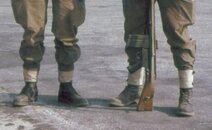chris_the_brit
Registered
I took the PADI drysuit class in a Whites Fusion (Sport, I think) and it was a great class. In the pool sessions we were supposed to intentionally fill our feet with air to get a feel for it and to practice the tuck and roll. It really took some effort to force the air into the feet - even the instructor found it difficult to do.
One thing I noticed while diving in the ocean in the drysuit was that I probably had too much weight - more weight meant more air in the suit (if using that for buoyancy) and hence a bigger bubble moving around in there.
I really liked the feel of diving dry but I also need to work to minimize my undergarments - minutes after getting out of the water I'll be sweltering.
One thing I noticed while diving in the ocean in the drysuit was that I probably had too much weight - more weight meant more air in the suit (if using that for buoyancy) and hence a bigger bubble moving around in there.
I really liked the feel of diving dry but I also need to work to minimize my undergarments - minutes after getting out of the water I'll be sweltering.






